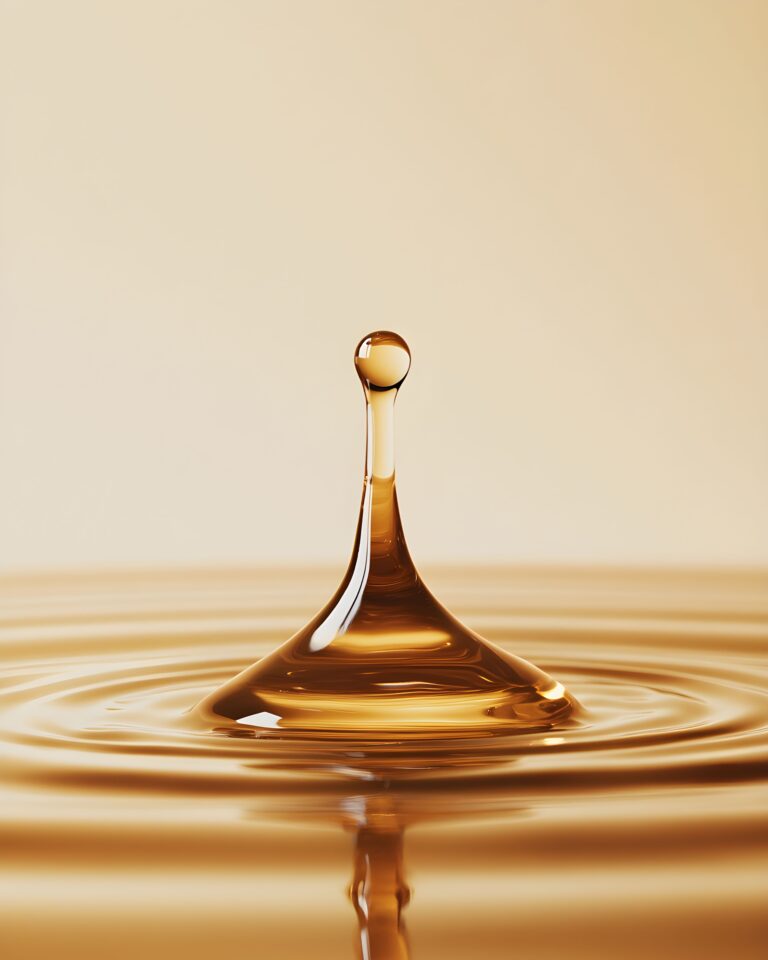We kind of take it for granted, but in today’s world, we’re surrounded by manufactured chemicals in everyday products.
From skincare to cosmetics, food containers, and even drinking water.
They’re all around us!
And many of these manufactured chemicals can interfere with the body’s hormone production
Your hormones regulate everything from metabolism and mood to fertility and brain function. When these disruptors enter the body, they can mimic or interfere with natural hormones, leading to a variety of potential health effects, including reproductive issues, metabolic disorders, and even an increased risk of certain cancers.
The National Institute of Environmental Health Sciences and the Endocrine Society warn that exposure to endocrine disruptors is more common than most people realize.
What Are Hormone Disruptors?
These chemicals can be found in thousands of consumer products, fromfood packaging to cleaning products, and even in the tap water you drink.
Endocrine disruptors are chemicals that interfere with the body’s natural endocrine system by either mimicking hormones, blocking hormone receptors, or altering hormone production.
Common hormone-disrupting chemicals include:
- Bisphenol A (BPA) – Found in plastic food storage containers, canned food linings, and coating on receipts.
- Phthalates – Used in cosmetics, personal care products, children’s toys, and even some food and beverage packaging.
- PFAS (Polyfluoroalkyl Substances) – Common in nonstick cookware, waterproof fabrics, and food storage containers.
- Pesticides and Herbicides – Residues found in conventionally grown produce can interfere with the body’s hormones and contribute to hormone disruption.
- Flame Retardants – Found in furniture, clothing, and electronics, these chemicals may affect hormone receptors and interfere with the body’s hormones.
Exposure to endocrine-disrupting chemicals doesn’t happen all at once—it builds up over time.
The more we are exposed to endocrine disruptors, the greater the health effects they may have on our hormone levels.
Health Effects of Hormone-Disrupting Chemicals
Scientific research from the Institute of Environmental Health Sciences and Environmental Health Perspectives has linked endocrine disruption to a range of health problems, including:
- Reproductive issues – Fertility problems, irregular menstrual cycles, and early puberty.
- Metabolic disorders – Weight gain, insulin resistance, and an increased risk of common childhood disorders like obesity.
- Thyroid dysfunction – Some endocrine disruptors like PFAS have been shown to interfere with the body’s hormone regulation, leading to thyroid imbalances.
- Increased cancer risk – Long-term exposure to endocrine disruptors has been associated with breast and prostate cancer, especially for women.
These potential health effects highlight why it’s crucial to reduce exposure wherever possible.
Where Are Endocrine Disruptors Found?
Endocrine disruptors are found in many everyday products.
Here are the most common sources of exposure how they affect human health:
Food and Beverage Packaging
Many canned foods and plastic food storage containers contain BPA, which can leach into the food you eat. Frightening, when you think about it! Plastic bottles, takeout containers, and disposable coffee cup linings also may contain endocrine-disrupting chemicals.
What to Do:
- Use glass or stainless steel for food and beverage storage.
- Avoid microwaving food in plastic containers.
- Choose fresh food over canned when possible.
Personal Care and Cosmetic Products
Many personal care products, including some cosmetics, contain phthalates, parabens, and other hormone-disrupting chemicals that are absorbed through the skin.
What to Do:
- Check the Skin Deep database to find safer beauty and personal care products.
- Ditch scented products that contain synthetic fragrances.
- Choose organic, fragrance-free skincare and cosmetic products.
Cleaning Products
Many detergent and household cleaning products contain endocrine disruptors that affect environmental health by contaminating air and surfaces.
What to Do:
- Use natural or homemade cleaning solutions like vinegar and baking soda.
- Choose fragrance-free or plant-based detergents.
Tap Water
Research from the Environmental Protection Agency has found that tap water may contain endocrine-disrupting chemicals from agricultural runoff, industrial pollution, and pesticide contamination.
What to Do:
- Install a quality water filter certified to remove hormone disruptors like PFAS and pesticides.
- Avoid drinking from plastic bottles whenever possible.
Household Items and Children’s Toys
Plastics in toys, furniture, and electronics may also contain hormone-disrupting chemicals such as flame retardants and polyfluoroalkyl substances (PFAS).
What to Do:
- Choose wooden or natural material toys.
- Look for flame-retardant-free furniture and textiles.
How to Reduce Exposure to Hormone-Disrupting Chemicals
Avoiding hormone-disrupting chemicals completely is nearly impossible, but small changes can significantly reduce exposure and support a healthy endocrine system.
- Eat Organic Food – Reduce intake of pesticide and herbicide residues by choosing organic when possible.
- Use Glass or Stainless Steel for Food Storage – Avoid plastic food storage containers to prevent chemical leaching.
- Choose Clean Beauty Products – Many cosmetic and personal care products contain parabens and phthalates. Look for brands free of parabens, phthalates, and synthetic fragrances.
- Switch to Non-Toxic Shampoo and Skincare – Someshampoos, lotions, and face creams contain chemicals that are absorbed directly through the skin. Opt for fragrance-free, organic, and EWG-verified products.
- Ditch Waterproof Makeup and Sunscreens with PFAS – Many waterproof cosmetics contain polyfluoroalkyl substances (PFAS), which have been linked to hormone disruption. Choose mineral-based sunscreens and PFAS-free makeup alternatives.
- Wash Your Hands Frequently – This reduces contact with chemical residues from daily items you come in contact with, like receipts, electronics, and household items.
- Avoid Touching Receipts – Thermal paper receipts often contain BPA, which can absorb through the skin.
- Filter Your Drinking Water – A high-quality water filter can remove many endocrine disruptors.
- Avoid Synthetic Fragrances – Products like perfumes, air fresheners, and scented candles may contain phthalates.
By making these simple changes, you can reduce exposure to disruptive chemicals and support your long-term health.
Final Thoughts
Endocrine-disrupting chemicals are everywhere, but now you have the knowledge to minumise your risk.
Small changes can have a huge impact on your environmental health and overall well-being.
Your body’s hormone levels are too important to leave to chance.
By staying informed, choosing cleaner alternatives, and reducing exposure, you can protect your endocrine system and take control of your health.







